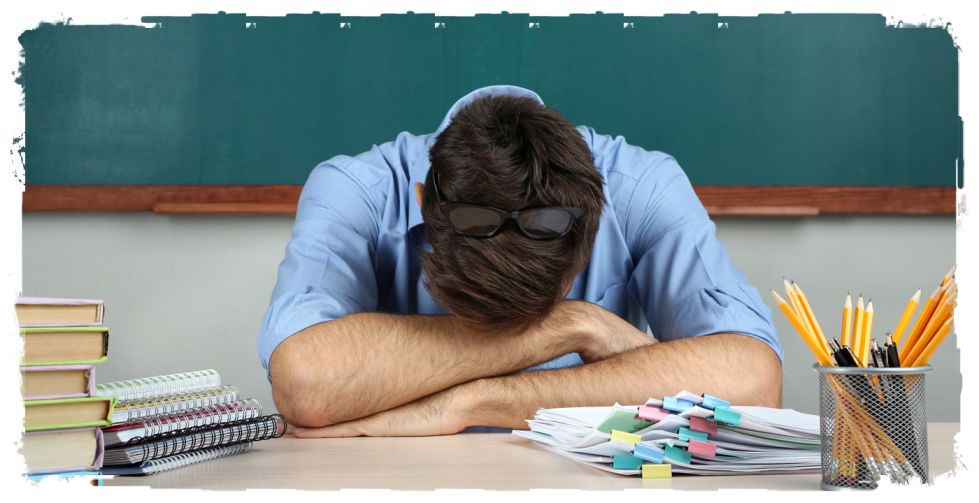In many schools around the world, the high student-to-teacher ratio presents significant challenges for educators in preparing for their classes. This workload can make it difficult for teachers to develop engaging activities, contributing to growing stress levels. This mounting stress is a primary reason why many teachers are contemplating leaving the profession. In this article, we will explore the concept of teacher burnout, its underlying causes, its impact, and strategies to address it.
1. Understanding Teacher Burnout
1.1. Definition
Teacher burnout is a prolonged state of mental, emotional, and physical exhaustion resulting from work-related stress. This condition occurs when educators lose their motivation and passion for daily responsibilities, particularly tasks such as lesson planning, classroom management, and student assessment.
Burnout is characterized by various psychological and physical symptoms. On the psychological side, it manifests as feelings of depression, helplessness, dissatisfaction, and distress. Additionally, teachers may experience a decline in job-related interest and motivation, as well as reduced concentration and creativity.
Physically, burnout may present as chronic fatigue, disrupted sleep patterns, digestive issues, and body aches. These symptoms can lead to significant health concerns and negatively affect teachers’ daily lives.
The consequences of burnout include diminished quality of life and job satisfaction, reduced productivity, and strained interactions with students. Therefore, it is crucial to implement teacher support programs and policies at both the national and school levels to facilitate early detection and prevention.
1.2. Key Statistics on Teacher Burnout
Teacher burnout is not limited to a single region. A 2022 Gallup poll revealed that 44% of K-12 teachers in the United States reported frequent or constant fatigue. Similarly, a July 2021 survey by the EdWeek Research Center found that approximately 60% of teachers experienced job-related stress, with 41% acknowledging that this stress adversely affected their job performance. Furthermore, a National Education Association poll indicated that 55% of teachers were considering leaving the profession earlier than they had originally planned. These statistics underscore the widespread nature of job-related stress among educators, potentially driving many to exit the field.
2. Recognizing Symptoms of Teacher Burnout
Teachers may not always recognize when they are on the brink of burnout. However, if any of the following symptoms are present, it is essential to take proactive steps to address them.
2.1. Constant Fatigue:
A heavy workload and emotional stress can lead to persistent fatigue, especially for teachers managing large numbers of students.
2.2. Self-Doubt:
Teachers may begin to question their teaching effectiveness, leading to self-criticism. While self-reflection is a crucial part of growth, excessive self-doubt can lead to stress and burnout.
2.3. Loss of Inspiration:
New teachers often start their careers with enthusiasm, driven by a desire to make a difference. However, as burnout sets in, this motivation can wane, leading to fear and detachment in the classroom.
2.4. Isolation:
Overwhelmed by work, some teachers may withdraw from classroom activities or disengage from their school’s teaching community. A lack of enthusiasm or reluctance to collaborate with colleagues may be an early sign of burnout.
3. Causes and Consequences of Teacher Burnout
3.1. Causes
Education is a fundamental pillar of society, and teachers play a central role in this system, often juggling multiple responsibilities that can strain their well-being. This strain can lead to burnout, manifesting as psychological, emotional, and physical fatigue. The primary factors contributing to teacher burnout include:
Excessive Workload:
Teachers handle various duties, from lesson planning and grading to student counseling and parent meetings. The increased demand for remote teaching since the pandemic has only added to their responsibilities, disrupting work-life balance and leading to burnout.
Interpersonal Issues:
Challenging relationships with students, colleagues, administrators, or parents can be another significant source of stress, particularly when dealing with behavioral issues or communication difficulties.
Lack of Resources and Support:
When teachers lack the necessary tools and support, they may feel overwhelmed and stressed. For example, being asked to teach outside their area of expertise or work with students who have special needs without adequate support can lead to feelings of frustration and burnout.
Financial Pressures:
Many teachers face the dual challenges of family responsibilities and low wages, leading to increased stress and burnout.
Personal Factors:
Individual personality traits, values, and expectations can also contribute to burnout. For instance, teachers with perfectionist tendencies may place undue pressure on themselves, leading to heightened stress levels.
These causes often interact, collectively contributing to the onset of teacher burnout.
3.2. Consequences
Burnout affects not only the individual teacher but also the students and the broader learning environment. Burned-out teachers may experience various physical and emotional symptoms, including fatigue, low energy, and anxiety. These symptoms can significantly impair their ability to perform their duties effectively.
In particular, burnout can hinder the creativity and engagement needed for effective teaching, especially in elementary and kindergarten settings. The resulting decline in teaching quality can negatively impact students’ academic performance and their social and ethical development.
Therefore, it is crucial to address burnout early. Initiatives should begin with individual teachers learning and practicing stress management techniques. Additionally, schools and governments must implement support systems to help prevent and manage burnout.
4. Strategies for Overcoming Teacher Burnout
4.1. Managing Stress
Stress is a major contributor to teacher burnout, making stress management techniques essential. Research indicates that simple practices, such as deep breathing, can help reduce stress. Regular physical activity, such as 30 minutes of moderate cardiovascular exercise several times a week, can also be beneficial. Activities that promote mind-body harmony, like yoga and meditation, can help focus and calm the mind.
For teachers who continue to struggle with stress, consulting a psychologist or mental health specialist may be necessary. Regularly reassessing one’s values and expectations about work can also help. Maintaining a positive mindset, as emphasized in psychology, can reduce stress and enhance resilience.
4.2. Balancing Life
Achieving a balance between work and personal life is crucial. Teachers should prioritize their physical health by maintaining a healthy diet and getting sufficient rest. To establish a work-life balance, set clear boundaries between school hours and personal time. Wherever possible, keep school-related tasks at school and reserve personal time for non-work activities.
Effective time management is key to achieving this balance, and tools like to-do lists or calendar apps can help. Additionally, it’s important to recognize your limits and be able to decline requests or obligations when necessary.
4.3. Building a Community
Creating a personal sanctuary through hobbies or activities outside work is essential. Finding a space for relaxation and joy can significantly reduce stress. Teachers should also seek to build a supportive community by connecting with colleagues facing similar challenges. Positive relationships with fellow educators can alleviate stress.
Joining a group for sharing concerns or participating in a mentoring program with more experienced teachers can provide valuable support. Engaging with educator communities, websites, and social media groups can also offer insights and encouragement.
While these strategies can help prevent burnout, they may not resolve all issues. Seeking professional help when necessary is critical.
5. Addressing Teacher Burnout: A Collective Responsibility
Teacher burnout is a serious issue that extends beyond the individual educator, affecting the entire school community and society as a whole. It can diminish the quality of education and negatively impact students’ learning experiences. Therefore, addressing teacher burnout is a collective responsibility that requires attention at both the personal and institutional levels.
On a personal level, teachers must focus on their well-being and adopt stress management techniques. However, this alone is not sufficient. Schools and governments must actively provide support by reducing teachers’ workloads and fostering environments that prioritize care and support. Additionally, society must recognize the significance of teacher burnout and work together to address it.
By taking action, we can create a healthy educational ecosystem in which all members of the community contribute. In conclusion, teacher burnout is not just a problem for educators—it is a challenge that society must tackle to secure a better future for our children and nation.







